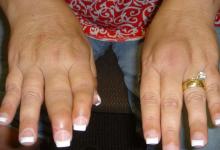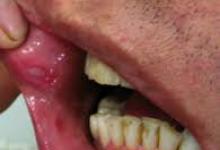Lupus Disease Control with Rituximab Save

Rituximab (Rituxan) may be an option for maintenance therapy in patients with difficult-to-treat systemic lupus erythematosus (SLE), European researchers reported.
Among 80 patients who underwent maintenance therapy with rituximab, there were 85 relapses during a median of 24.5 months follow-up; these were primarily musculoskeletal and did not involve major organs, according to Federico Alberici, MD, PhD, of the University of Milan in Italy, and colleagues.
But 35% of the patients never experienced a flare during maintenance therapy, and at the time of the last course of treatment, 84% were in remission, they reported online in Arthritis & Rheumatology.
In randomized clinical trials of SLE, rituximab has failed to meet the primary efficacy endpoint. However, this B-cell depleting agent has been widely used in refractory disease and in nonrandomized studies.
Management of SLE is complex and relapses are common but difficult to predict. "Relapses are associated with risk of damage accrual and; therefore, attention should be focused on flare prevention aiming at the right balance between immunosuppressive drug dosing, risk of toxicity, and disease activity," Alberici and colleagues wrote.
Rituximab has demonstrated efficacy as maintenance therapy for other autoimmune conditions such as vasculitis, but published data have been sparse on its use for relapse prevention in SLE.
Accordingly, the researchers conducted a retrospective study of 147 patients seen from 2004 to 2016 at four specialty centers who received one or more course of treatment with rituximab. The specific focus of their analysis was on the 80 patients who had at least three courses of treatment for flare prevention.
Disease activity was evaluated with the European Consensus Lupus Activity Measurement (ECLAM) score, and complete response was defined as a score of 0 or 1 and by a decrease of other immunosuppressive doses by at least 25%.
Among the 80 patients receiving maintenance therapy, mean age was 45 and 90% were women. Disease duration averaged 13 years.
Median overall follow-up was 38 months, and median cumulative rituximab dose was 6 g. At the time of first rituximab dose, 86% were receiving prednisolone in mean dosages of 11 mg/day, and 57% were also on immunosuppressive drugs such as mycophenolate mofetil (CellCept), methotrexate, and azathioprine. Mean ECLAM score at the time of rituximab initiation was 3.5.
After 6 months, ECLAM decreased to a mean score of 1.86 (95% CI 1.52-2.19, P<0.0001), and at that time point, 38% of patients were in complete remission. By months 12, 18, and 24, the numbers in complete remission were 40%, 51%, and 48%, respectively.
By the sixth course of treatment, the proportion of patients who were not receiving corticosteroids had risen from 14% to 41% and the mean prednisolone dosage fell from 11 to 3.8 mg/day.
During a median follow-up of 13 months after the last rituximab course, 30 flares occurred, with mean ECLAM scores for patients who flared being 3.09. Flares involving major organ systems (neurologic, pulmonary, and hematologic) during maintenance therapy occurred at a rate of 38%, which rose to 67% after rituximab treatment ceased.
Flares were managed with prednisolone dose escalation in 34%, and an increase in immunosuppressive drug dose in 14%, while new immunosuppressive drugs were added in 26% and the next scheduled rituximab infusion was brought forward in 8%.
In a multivariate analysis, the presence of active joint involvement at the start of rituximab therapy was associated with an increased risk of flare, with an odds ratio of 3.55 (95% CI 1.34-9.37, P=0.010).
With regard to adverse events, the rate of serious events during maintenance therapy was 24 per 100 patient-years and the incidence of malignancy was 3%. A total of 16 episodes of late-onset neutropenia were reported, with one death from neutropenic sepsis. Seven patients died during maintenance therapy and two after rituximab was stopped.
Damage as assessed on the Systemic Lupus International Collaborating Clinics score rose from 1.8 at baseline to 2.14 at the last available follow-up visit. This progression of damage was not surprising, according to the investigators, in that patients had severe disease of long duration.
The relatively high flare rate observed in these patients may be explained by the fact that not all patients had a pre-planned treatment interval between rituximab courses, and 11% of patients missed one or more course of treatment during the first 2 years, according to the authors.
"In conclusion, we confirm in a large multicenter cohort that rituximab may be an option in patients with SLE. Its use as maintenance treatment allows corticosteroid and immunosuppressive drug sparing while stabilizing the overall disease activity; however, it is to be noted that musculoskeletal flares were common," they wrote.
A study limitation was its retrospective design.
Alberici and co-authors disclosed relevant relationships with Chemocentryx, GlaxoSmithKline, Roche, Novartis, SOBI, Genzyme/Sanofi, AstraZeneca, Boehringer Ingelheim, InflaRx, Insmed, and Takeda.










If you are a health practitioner, you may Login/Register to comment.
Due to the nature of these comment forums, only health practitioners are allowed to comment at this time.